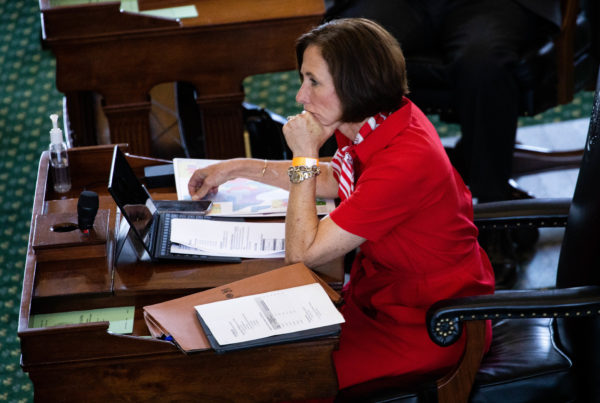After 20 years of growth, Texas schools are expecting to see declines in student enrollment numbers over the next decade, likely driven by decreased birth rates in the state.
Texas school districts could feel the implications of fewer students by receiving less state education funding since the state legislature funds based on the school’s average daily attendance.
Edward McKinley, reporter of Texas state government and politics for the Hearst Bureau, which includes the Houston Chronicle and the San Antonio Express-News, joined Texas Standard to discuss. Listen to the story above or read the transcript below.
This transcript has been edited lightly for clarity:
Texas Standard: Walk us through what’s caused Texas schools to have seen consistent growth in student enrollments within the past two decades. Although I have to say, I’ve been reading some stories that that’s been tapering off of late.
Edward McKinley: Yeah, that’s right. So growth has been driven over the last couple of decades, particularly the last decade or so, based on about 50 to 80 fast-growing school districts along the I-35 corridor – for the most part, most of them in the suburbs. But the decrease across the board that we’re going to be seeing over the next decade is likely going to be driven by decreased birth rates that we’re seeing.
You know, I read that and I thought, well, part of the political narrative that we’ve been hearing a lot about is that more and more parents are taking their kids out of public schools and moving them into alternatives. How does this coincide with other trends?
Sure thing. So the number quoted – and we should mention that this data was brought up by Texas Education Agency commissioner Mike Morath earlier this week – those numbers would count charter schools, which are public schools in Texas, as well as traditional ISDs. Although if we were to see a bill, a voucher bill or education savings account, which the governor and the lieutenant governor have been advocating for this year, we might see an even larger number of kids moving away from the public school system.
This has potentially huge implications for the way that schools are funded. And I suppose long term, how many of those schools can maintain budgets and stay open?
Yeah, I think that’s the key question, really, because Texas funds its schools based on a per-student basis. But these schools still have to pay for teachers to fill the classrooms and they still have to pay for these facilities. So having made those overhead investments, if they start to see declines in enrollment, they’re going to really struggle to stay open.
Which parts of the state would be most affected by a population decline should things play out as the TEA director is saying here?
So the phenomenon of decreased birth rates leading to lower amounts of kids is not unique to Texas, it has been happening around the country. Demographers split up the nation into four big baskets of racial ethnic groups, and white people tend to have lower birth rates. So more diverse states have been less affected by this as quickly, but it’s been a larger trend over time. So now it’s starting to catch up to Texas. So long answer to your question: the more whiter areas of the state, so probably rural areas are going to be affected more quickly, I would imagine. But some of the larger school districts have already started to see enrollment decreases, although part of that is attributable to charter schools.
In your reporting, you mentioned that Texas Gov. Greg Abbott and Lt. Gov. Dan Patrick are pushing for what they term “school choice.” Others, especially on the Democratic side, see this as undermining public schools. How would this demographic change play a role in that conversation about what some people have termed “vouchers”?
I spoke with one expert for this story, Bob Popinski, who’s a policy expert over at Raise Your Hand Texas, and he was just describing, because Texas funds schools based on per-student attendance, already charter schools and public schools are competing for state dollars. So if we were to introduce a third competitor for those dollars, I think it’s reasonable to assume that everyone would be stretched that much tighter.













